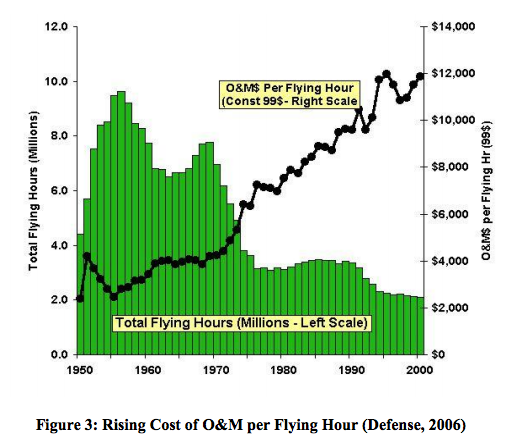An RQ-4 Global Hawk at Beale Air Force Base, Calif.
We had an item the other day about the cost of keeping the Air Force’s RQ-4 Global Hawk drone fleet flying. We updated it Wednesday with answers from the Air Force that warrant further examination here.
The contract simply noted that taxpayers would be paying $434 million for 18 months of support for the Global Hawk to Global Hawk builder Northrop Grumman. (Shades of King Camp Gillette, who invented the disposable safety razor and supposedly said: “Give ’em the razor; sell ’em the blades,” although Global Hawks, at about $100 million each, are not cheap.)
When we asked the Air Force how many Global Hawks and how many Global Hawk flight hours the contract was for, spokesman Charles Gulick said “24” and “the contract price is not calculated on the basis of flight hours.” Instead, the price is “based upon several factors, to include ratio of sorties divided by flight hours, level of Air Force requested Field Service Representatives at each operational location, and Air Force established performance based objectives.”
That’s all well and good for Air Force bean-counters, but it doesn’t help taxpayers much. Dollar amounts for Pentagon purchases are becoming harder to find. The Pentagon’s Selected Acquisition Reports used to be issued quarterly. They track each major program’s cost and how it is changing over time.
But check out the SAR corral over on the Pentagon website: they stopped being routinely issued every three months in 1984. There have been only five issued in the 17 quarters of the Obama Administration. The most recent — labeled NEW on the website – dates to 2011.
The same problem exists when trying to track down cost-per-flying-hour (CPFH), a standard measure of how expensive it is to operate an aircraft. There are several different ways to calculate such costs, and advocates are skilled at using the highest or lowest cost per flight hour, depending on the case they are trying to make.
Turns out, an unpublished 2005 Navy analysis found that 70% of flying-hour costs were attributed to repair parts, 19% were attributed to aviation fuel, and 11% were attributed to modifications (the report is cited on page 2 of this study). The estimated cost of flying the new F-35 fighter approaches $30,000 per hour. The cost per flying hour has soared as the number of hours flown has plummeted and as aircraft have become more complicated and consequently more expensive to keep in the air.
But without having the number of flight hours the RQ-4 contract supports, we need to come up with a different yardstick. Air Force missileers, for example, have something called “cost per alert hour,” or CPAH (it’s $627.38 for each of the nation’s land-based nuclear missiles, according to this 2012 analysis).
So let’s simply come up with something called CPOH, for “cost per ownership hour.”
Based on Monday’s contract announcement, and with the additional information provided by the Air Force – an 18-month contract for $434 million supporting 24 Global Hawks — it works out to something like this:
— The contract pays for 432 months of Global Hawk support.
— That works out to $1,003,513.94 per Global Hawk per month.
— That makes the Global Hawk’s CPOH $1,393.77.




